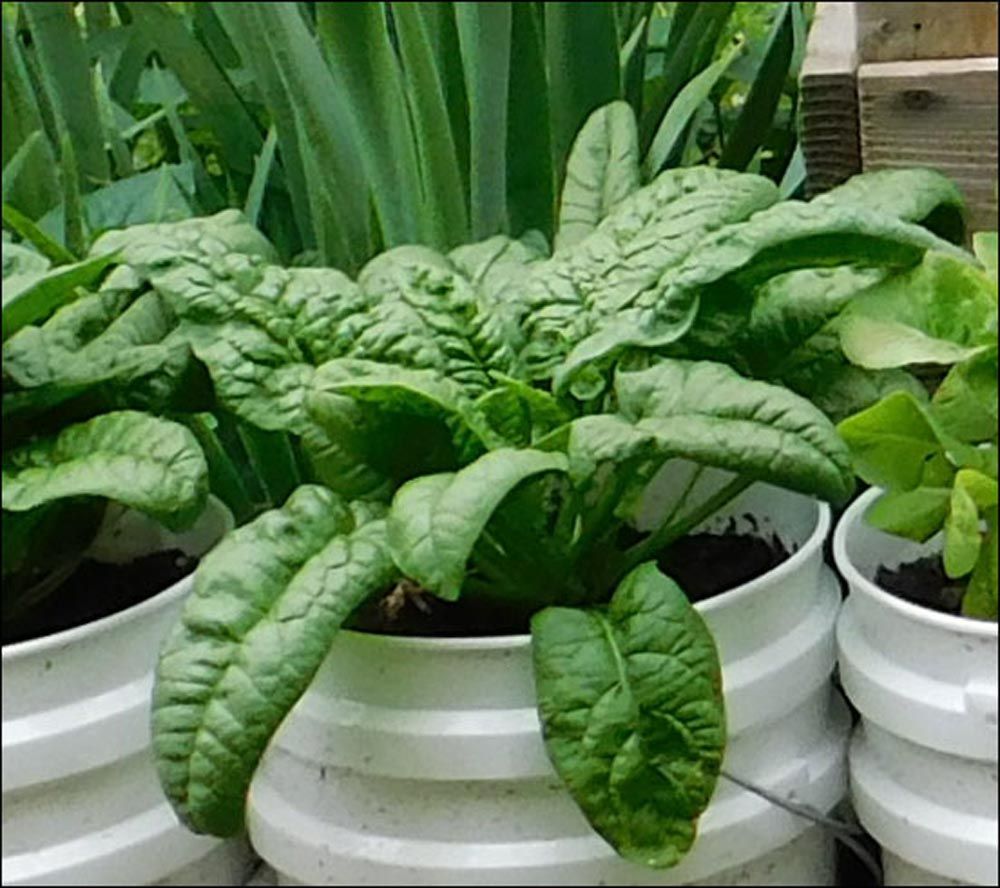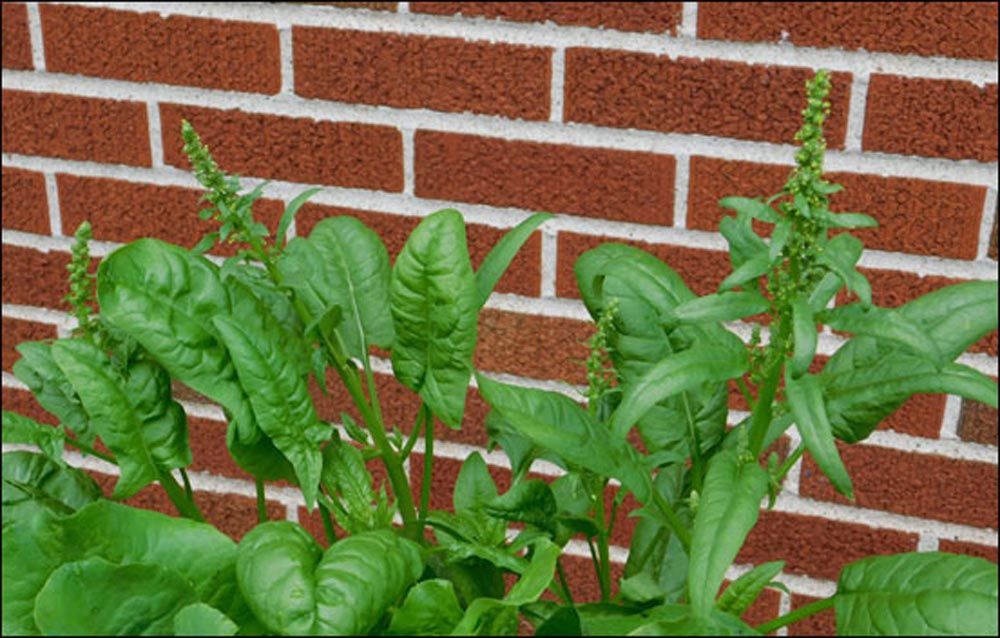Spinach

(More info to come...)
SPINACH:

(© DTrammel 2017)
Also Known As:
Taxonomy: Plant, of the Family Amaranthaceae, Eatible
General Information: Spinach is a broad leaf plant, related to Beets and Swiss Chard. It is one of the most cold tolerant vegetables in the garden, producing many leaves in a short time. Its tolerance allows you to plant first in the Spring and again in the Fall. It does double duty, its leaves being able to be eaten both raw and cooked.
Historical Information: Spinach is thought to have originated in Persia, then being transported East to India and later China. Mediterranean traders then transported spinach back to Europe during the 10th Century. It became popular in England and Northern Europe in the 14th and 15th Centuries due to its early ripening in the Spring during the Lent season, providing a substitute to foods religiously proscribed.
--- "Quotes and Fun Facts": "I'm Popeye the Sailor Man. I'm strong to the finich. Cause I eats me spinach. I'm Popeye the Sailor Man."
"Popeye, The Sailor Man", Theme Song, 1933 by Sammy Lerner.
Cultivating This Plant:
--- Varieties: Spinach is categorized as either "savory" or "unsavory", also called smoothed leaved. This has to do with the wrinkles in the leaves and not the flavor of the spinach. Wrinkly leaves are harder to wash.
Color ranges from light to dark green, with leaves often growing light when the plant bolts.
--- Soil Range, Fertilizers and Planting Info: Spinach grows best in soil that is well drained and rich in organic matter. The pH should be neutral to mildly alkaline, from 6.5 to 7 or above range. It likes nitrogen rich soil additives like composted manure, cottonseed or blood meal. Keep any fertilizer at least 4-6 inches from the base of the plants though, to avoid burning the roots. Water after fertilizing. Spinach likes lots of moisture but needs good drainage.
While spinach prefers full sun, it will still produce a good harvest in partial shade conditions.
Spinach should be seeded in rows about 14-18 inches apart. Cover seeds with about 1/2 inch of soil to start. Keep the soil moist and after the seeds have germinated, begin to thin them. First to 3-5 inches apart, then further in several thinnings, picking the strongest plants each time. Be harsh, and thin often.
Because of the time it takes to keep on thinning, and the possibility you wait too long, many people pre-sprout their starter plants indoors, allowing them to get an early start. Spacing of already sprouted starter plants should be around 12 inches apart, this gives this bushy plant room to reach full size.
Due to its shorter lifespan, spinach is an ideal plant to grow in containers.
--- Life Cycle: In the Spring, plant spinach 4-6 weeks before the last frost.
Spinach will usually clump into a tight small bunch of broad leaves, the newer ones developing in the center and spreading outward as they mature.
As the days warm and the length of sunlight approached 14 hours ad day, spinach will "bolt".
This is the process of producing seeds. A center stalk will form and grow tall. Leaves will elongate and adopt a more arrow shape. Flowers will form at the top of the stalk. The leaves will grow bitter and not very tasty.

Spinach's tendency to bolt quickly with some warmth and sunlight, makes it ideal for Fall planting.
Plant it 6-8 weeks before the first Winter frost. The shortening days and less light are actually a helpful factor then. Spinach is very cold hardy, and can survive temperatures which dip to the teens and low 20s once the plants have established themselves. In Southern areas that see mild Winters, plants can often survive to regrow in the Spring with a very early harvest.
--- Harvesting: You can begin harvesting spinach leaves as soon as they are big enough to eat. Small leaves will be more tender. Remove the outer leaves first, allowing the inner leaves room to grow.
Some people think that once the plant has bolted in the Spring, you can cut the entire plant at ground level, leaving the roots, for a later crop. Your better bet is to simply pull the plant up, and use the area for a warm weather crop instead. Replant starters in the Fall fresh.
--- Collecting Seeds:
--- Diseases and Pests: Aphids, spider mites, plant lice and flea beatles enjoy snacking on spinach. A good spray of water will often knock off insects to be crushed or gathered for disposal. Natural predators like Lady Bugs can be introduced.
Downy or Blue mildew and the soil borne disease Fusarium wilt are the main problems. They can appear during cool periods of moist weather. Look for yellow spots on the top of the leaves and a grayish blue mold on the bottom. If it is affecting just a few leaves, simply remove them, Larger attacks are best dealt with the removal of the entire plant, if it hasn't infected others.
White rust, which will cause white spots on the leaves should be watched for too.
--- Companion Plants: Spinach likes other leafy eatable plants like lettuce and argula.
Nutritional Data:
Link to the USDA Nutritional Database: https://ndb.nal.usda.gov/ndb/foods/show/3167?
Spinach is a rich source (meaning it delivers 20% or more of the USDA Daily Value, DV) of vitamin A, vitamin C, vitamin K, magnesium, manganese, iron and folate. 100 gms (3.5 ozs) of ground beef contains 2.4 miligrams of iron. A similar size amount of cooked spinach contains 3.57 mg.
Spinach is a good source (10-19% of DV) of the B vitamins, riboflavin and vitamin B6, vitamin E, calcium, potassium, and is high in dietary fiber.
Cautions and Hazards: Spinach contains oxalate, a compound which can inhibit the absorption of iron in the body when eaten in great amounts. Oxalate can also inhibit calcium absorption.
Cooking and Eating:
--- Historical Dishes: Spinach is said to have been a favorite of the Italian noblewoman and later Queen of France, Catherine de' Medici. Dishes served on a bed of spinach are called "Florentine" in honor of her birthplace.
--- Useful Recipes and Cooking Hints: Spinach leaves can be eaten raw, in salads and as a side to other dishes, as well as cooked.
--- Storage of the Harvest:
Medical and Herbal Lore: Research carried out by the Massachusetts Eye and Ear Infirmary has shown that people above the age of 55 and who regularly eat spinach, had a much lower risk of macular degeneration resulting in the loss of visual acuity.
GW Forum Links To Thread Discussions:
Outside Links:
Contributors: